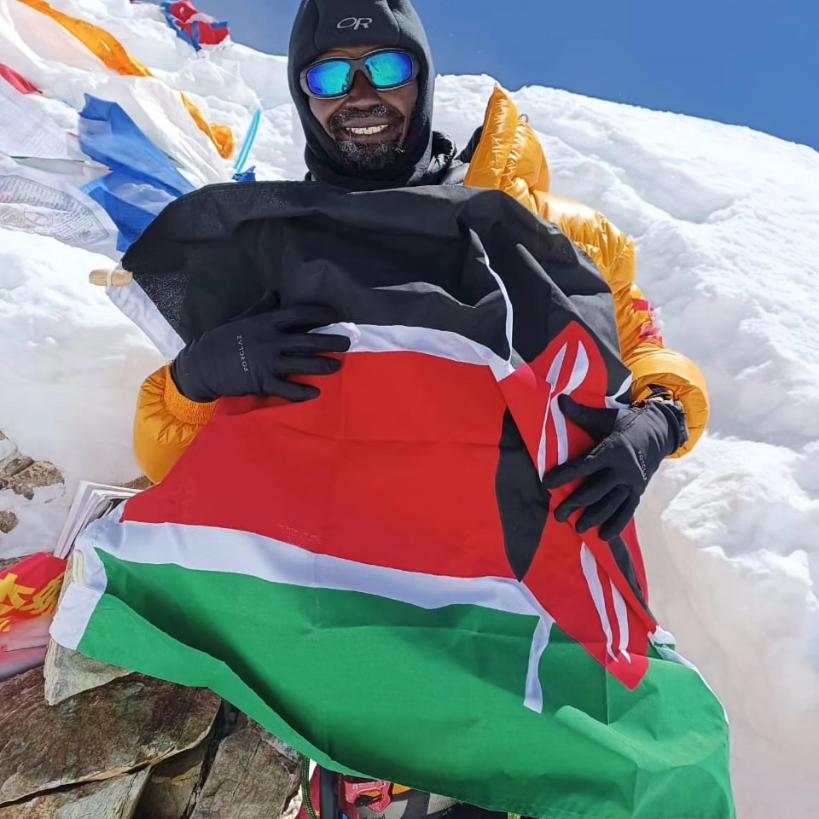- Kenyan mountaineer Cheruiyot Kirui has been found dead near the summit of Mt. Everest, marking a tragic end to his attempt to climb the world’s highest peak without supplemental oxygen
- His body was discovered just meters below the summit by rescuers from Seven Summit Treks, and efforts to rescue his Sherpa guide, Nawang, are ongoing
- Kirui, who worked with the KCB bank lost contact with his team from the Bishop Rock, a perilous section at an altitude of 8,000 meters
Kenyan mountaineer Cheruiyot Kirui has been found dead near the summit of Mt. Everest after an extensive search and rescue effort, in what is now a tragic development.

Kirui was attempting to become the second Kenyan to climb Everest and the first to do so without supplemental oxygen.
Base camp officials confirmed that Kirui’s body was discovered just meters below the summit by rescuers from Seven Summit Treks (SST), a Kathmandu-based expedition company.
Efforts to rescue his Sherpa guide, Nawang, are still ongoing.
Kirui lost contact with his team from the Bishop Rock, a perilous section at an altitude of 8,000 meters.
According to the officials, Nawang reported that Kirui exhibited abnormal behavior and refused to return or use bottled oxygen.
Must Read:
1: Kenyan Climber Goes Missing on Mt Everest
2: Samuel Wanjiru: Kenyan Working With US Marines Goes Missing After Being Swept By Ocean Currents
The duo subsequently went out of contact.
The expedition, organized by SST, quickly mobilized a search and rescue operation, dispatching Sherpa rescuers to navigate the hazardous terrain above the balcony area.
Despite challenging conditions, the rescuers found Kirui’s body but continue to search for Nawang.
Kirui, a banker, undertook this ambitious journey to push the limits of human endurance.
His tragic end has intensified concerns about the safety of climbers on Everest, especially given recent incidents.
Earlier this season, Romanian climber Gabriel Tabara also died while attempting to summit without supplemental oxygen.
Kirui’s mission was part of a growing trend among mountaineers to climb Everest without supplemental oxygen, a testament to human endurance but also a significant risk.

